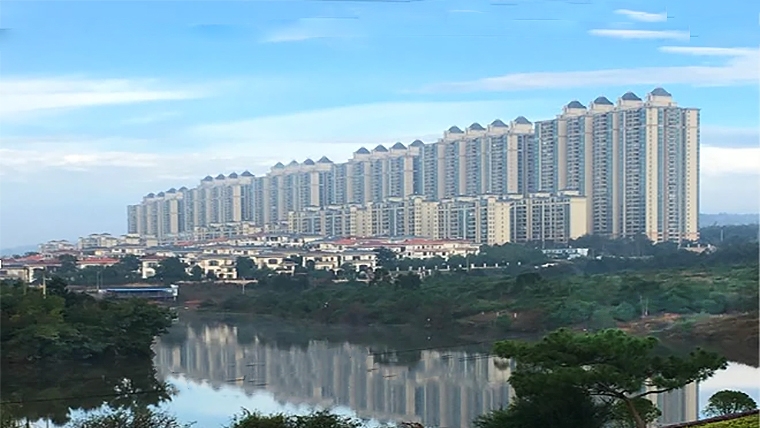
By Andrew Sheng and Xiao Geng
China’s growth model is undergoing fundamental change. After decades of relying primarily on external demand to drive growth, the government has embraced a “dual circulation” model, driven by both internal and external demand. The goal is to make China’s economy more resilient and less vulnerable to external shocks, but the structural transformation has run up against major roadblocks.
When Deng Xiaoping launched his “reform and opening up” in 1978, China pursued a development strategy modeled after successful East Asian economies like Japan and South Korea: welcome foreign direct investment, expand cross-border trade linkages, leverage low labour costs to bolster the manufacturing sector, and take advantage of external demand to drive growth. Over the last four decades, FDI flows – about two-thirds of which came through Hong Kong – enabled China to transform Guangdong and other coastal provinces into global supply-chain hubs.
As industrialisation progressed, incomes and wealth increased, and Chinese workers became consumers of both goods and services. As a result, the foreign-trade-to-GDP ratio declined, from a peak of 67% in 2006 to around 35% today, though China still relies on the jobs provided by its export industries.
As China built up its manufacturing sector, it also invested heavily in expanding its construction and financial industries, thereby laying the foundations for a dynamic real-estate market. Over the last decade, the nominal average annual growth rate of the construction sector and the financial and real-estate industries reached 13%, 14.8%, and 10.5%, respectively.
In 2021, China’s construction sector contributed 13.8% to China’s GDP, with the real-estate industry’s value-added reaching 6.8% of GDP, though it fell to 6.1% in 2022. Today, real-estate assets account for about 70% of household wealth, with important implications for consumption. Moreover, real-estate loans account for 27% of total bank credit, meaning a thriving real-estate market is also critical to financial stability.
The real-estate market’s rapid growth was driven partly by a financing innovation that originated in Hong Kong. Rather than completing projects, and then recouping their investment, residential housing developers began selling units before completion. This enabled them to use down-payments from home-buyers – in addition to the funds released by lending institutions as construction progressed (construction drawdowns) – to finance projects. From 2015 to 2022, the share of down payments and mortgages in total developer funding increased from 62.4% to 80.4%.
But this approach carried risks. By striking deals before construction was completed, developers and home-buyers left themselves exposed to interest-rate increases and slowdowns in price growth.
Developers who had borrowed heavily using US dollar bonds were particularly vulnerable – a reality that became painfully clear when surging inflation in the United States compelled the Federal Reserve to begin aggressively raising interest rates. Last year brought a series of defaults by major real-estate developers, which forced local governments to intervene to protect the rights of the affected home-buyers.
The real-estate sector’s travails have generated considerable fiscal challenges. In 2021, direct real-estate taxes accounted for 16.9% of national tax revenue, and 24% of local-government tax revenue. But falling real-estate prices have squeezed those revenues. In 2022, income from state-owned land sales decreased by 23.2%, causing China’s national budget revenue to fall by 20.6%. Declining revenue is also undermining local governments’ ability to support growth, such as by financing urban investment platforms.
The deterioration of US-China relations, and the disruptions caused by the COVID-19 pandemic, have further impeded China’s structural transformation. In fact, the economy’s internal and external circulation have both slowed significantly, damaging the balance sheets of households, enterprises, and all levels of government.
Both imports and exports fell last month, by 4.5% and 7.5%, respectively. Within China, jobs are not being created fast enough to absorb the supply of new graduates: as of last month, some six million young people (aged 16-24) – 20.8% – were unemployed. Housing and stock prices remain under pressure.
But there is reason to hope that China will bounce back from its current struggles. US Secretary of State Antony Blinken’s recent visit to China may augur stabilisation of the US-China relationship – or, at least, a respite from further deterioration.
In any case, China’s government is committed to stimulating employment, stabilising the housing sector, managing financial risks, supporting technological innovation, and encouraging green and inclusive growth. The market seems to be anticipating a comprehensive and forceful stimulus package that supports these objectives.
The rest of the world has an obvious stake in the outcome. China’s success in managing the challenges ahead could be the difference between a global recovery and a global recession.
Andrew Sheng, a distinguished fellow at the Asia Global Institute at the University of Hong Kong, is a member of the UNEP Advisory Council on Sustainable Finance. Xiao Geng, Chairman of the Hong Kong Institution for International Finance, is a professor and Director of the Institute of Policy and Practice at the Shenzhen Finance Institute at The Chinese University of Hong Kong, Shenzhen. Copyright: Project Syndicate, 2023, published here with permission.
2 Comments
China is up against the ceiling. There isn't enough planet to maintain total global growth, so it would take the implosion of the US, to give China temporary room (it would still hit the limits).
It is building (has built) a port in Pakistan, to get energy in by the back door, presumably. It will be watching Russia with concern; whoever ends up in possession of Russian fossil energy, wins (Saudi Arabia's peak is in the rearview mirror, US fracking was short-term and there's nobody else big enough to pic up the slack.
And everything built, decays...
Interesting times
I don't see it that way, it will turn around and chug along another couple of decades. China is just waiting for the USA to implode, they don't need to do a thing just watch the Americans do it all by themselves. The USA is just one big powder keg, perfectly divided society down even political lines and that's before you throw in the racial divide, throw in more guns than people and just wait for it to go off.

We welcome your comments below. If you are not already registered, please register to comment
Remember we welcome robust, respectful and insightful debate. We don't welcome abusive or defamatory comments and will de-register those repeatedly making such comments. Our current comment policy is here.